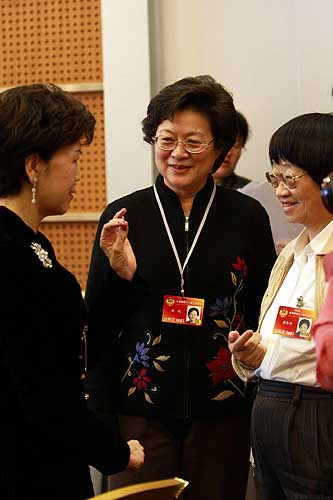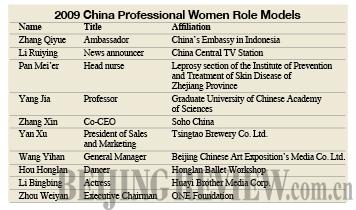|
 |
|
ACTIVE PARTICIPATION: Three members of the CPPCC National Committee discuss proposals submitted to this year's CPPCC plenary session (XIAO YING) | Chen said the federation has always been calling for further support to high-level women talents from the Central Government. "High-level women talents include professionals, entrepreneurs and officials. We must provide a better environment and favorable policies for them, so that the basic national policy of ensuring gender equality can be better implemented."
Wang Wu, a deputy of NPC and Vice President of Jiangnan University in Wuxi, east China's Jiangsu Province, suggests that besides the government's support, women themselves should pay more attention to their careers and strive for more right of say in society.
"There is a lot of work to be done to eliminate gender inequality, such as eliminating male chauvinism," Wang said.
Many Chinese women agree International Women's Day is in effect a symbol of the weakness of females in social and economic arenas. Only when International Women's Day becomes history can a real equality between men and women be realized.

The International Women's Day
In 1910 the Second International Conference of Working Women was held in Copenhagen. A woman named Clara Zetkin tabled the idea of an International Women's Day (IWD). She proposed every year in every country there should be a celebration on the same day—a Women's Day—to press for their demands.
The very first IWD was launched on March 19, 1911. In 1913, IWD was transferred to March 8. IWD was officially recognized by the United Nations and has been taken up by many governments since 1975.
After the founding of the People's Republic of China in 1949, the Chinese Government sent a general circular to all citizens in December that year affirming March 8 was to be set as a day for women. | 